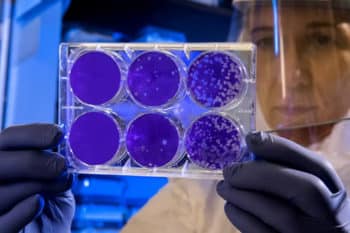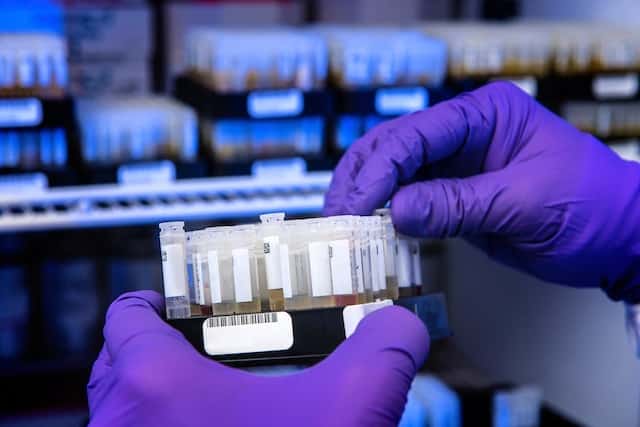Our immune system produces antibodies to fight against diseases caused by pathogens like bacteria, viruses, fungi, etc. Most microorganisms and viruses have proteins called antigens. The immune system can recognize these antigens as foreign entities through antibodies.
Table of Contents
The antibodies are y-shaped molecules with antigen-binding sites and crystalizing sites. The molecules in the variable part of the binding segment make the antibodies highly specific to antigens. This nature of antibodies makes them suitable for various research and diagnostic purposes.
Therefore, there is the large-scale industrial production of antibodies. Moreover, scientists have been able to produce application-based antibodies. The process is called custom antibody production.
Below we give the details of antibody applications.

Antibody medicines
Antibodies are an integral part of the body’s defense system. Now, scientists and pharma companies can produce antibodies in laboratories that can target specific antigens. They design it in such a way that there are no side effects. Antibodies are useful for treating diseases such as cancer, rheumatoid arthritis, heart disease, etc. It is also helpful in boosting immunity and treating immune deficiencies.
Research is going on for the use of antibodies to treat allergies and cancer. Antibody-based vaccines are available for diseases such as AIDS. Even for the covid-19 infections, scientists utilized antibody therapy when the infection was at an early stage.
Labeling and detection
There are several methods for detecting the presence of antigens and intracellular organs. In the flow cytometry, fluorochrome-tagged antibodies stain the suspension having single cells. It has a range of applications like cell sorting, the study of the gene expression system, etc. Immunohistochemistry is a process of detecting antigens and locating proteins.
In the immunoprecipitation technique, one can check the presence of antigens and segregate and purify them. Here the antibodies label and pull the target antigens down to the layer of magnetic or agarose beads where precipitation occurs.

Western blot
This technique is for detecting and segregating proteins based on their molecular weight. Here separation of proteins from the sample solution happens with gel electrophoresis. Then the proteins get transferred to a polymer sheet. Here proteins of the same weight form a band.
At this stage, the primary antibodies can attach to the epitope of target proteins. The secondary antibodies conjugated with fluorescent labels append the heavy chains of primary antibodies. They do not affect the protein binding.
Western blot is a sensitive method and is the best method for determining protein size and quantity. It is a confirmatory test for diseases like HIV, Hepatitis B, etc.
Immunosorbent assays
Elisa or enzyme-linked immunosorbent assay is a frequently used method for detecting proteins, peptides, antibodies, hormones, etc. It is based on the specific binding of antibodies and antigens. Here the primary antibodies recognize the target molecule.
The secondary antibodies are enzyme-conjugated and enhance the sensitivity. There are several advantages of the Elisa test.
There is no need to purify the sample, yet one can obtain the results quickly. Elisa test is applicable for detecting infections like Ebola, AIDS, Zika virus, pernicious anemia, syphilis, etc. Chemists use it for the detection of food allergens. Rapid test kits for detecting coronavirus utilize the Elisa method.

Mass spectrometry
With mass spectrometry, it is possible to determine the mass of different molecules. You can use it to detect impurities and find the protein content in a sample. It has a wide range of applications in fields, such as drug discovery, proteomics, environment analysis, etc.
The process involves ionizing the particles with electron beams. Then acceleration separates the ionized molecules under an electric field. Now the molecules move at different speeds based on their mass. The purification of the molecules happens using antibody-affinity methods.

Study of protein interactions
Proteins play various roles in the growth and metabolism of living beings. They are an integral part of cellular structure and act as messenger molecules. They play an active role in gene expression, pH maintenance, and the body’s defense mechanisms.
Thus, the study of protein interactions is crucial for the scientific community. It helps in understanding various aspects of biology, ranging from cellular functions to drug discovery. There are different methods used for studying protein interactions.
These include co-immunoprecipitation, pull-down assays, crosslinking analysis, etc. In these methods, antibodies are used for labeling and capturing protein molecules. The affinity of custom antibodies to protein molecules helps determine constituent amino acids and the folding of peptide chains.
Final thoughts
The body produces antibodies in response to the entry of infectious microbes like viruses, bacteria, and fungi. The antibodies can identify the foreign cells and attach them. They either neutralize or kill the disease-causing microbes. Given their crucial role, scientists started isolating and manufacturing antibodies. Custom antibodies are of two types- polyclonal and monoclonal.
Monoclonal antibodies can attach only to a specific antigen and are custom-made using hybridoma technology. Polyclonal antibodies are cheaper and faster to manufacture. Plasma B cells of host animals produce polyclonal antibodies. For research purposes, scientists prefer monoclonal antibodies.







